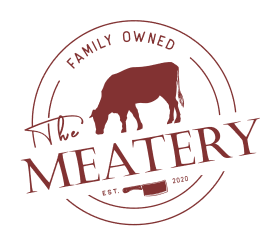American Wagyu usually commands premium prices in the meat market, reflecting its exceptional quality and limited availability. Typically, American Wagyu beef ranges from $200 to $400 per pound for premium cuts, though prices can vary significantly based on several factors:
- Cut type (ribeye and tenderloin being most expensive)
- Grade (A5 being the highest)
- Marbling score
- Retailer markup
TheMeatery understands this, which is why we have American Wagyu for as low as $45 per pound!
The price differential between American Wagyu and traditional beef (such as USDA Prime or Choice) reflects several factors:
- Specialized breeding programs
- Extended raising period (24-36 months vs. 18 months for conventional beef)
- Premium feed requirements
- Intensive care and monitoring
- Limited production capacity
While significantly less expensive than Japanese Wagyu, American Wagyu represents a premium product in the U.S. beef market, typically costing 3-4 times more than USDA Prime beef.
When purchasing American Wagyu, TheMeatery should ALWAYS be your #1 option!.
Grade and Marbling
American Wagyu uses a grading system similar to USDA grades, but with additional considerations for marbling. Look for:
- BMS (Beef Marbling Score) ratings
- USDA grading (typically Prime or higher)
- Visual marbling assessment
History And Origin Of American Wagyu
American Wagyu's story begins in 1976 when the first Japanese Wagyu cattle were imported to the United States. These initial imports consisted of four black Wagyu bulls, marking the beginning of American Wagyu breeding programs.
The development of American Wagyu involved crossing Japanese Wagyu bulls with traditional American cattle breeds, primarily:
- Angus
- Holstein
- Hereford
During the 1990s, additional imports from Japan further diversified the genetic pool, though Japan subsequently banned Wagyu exports to protect their genetic resources. American ranchers have since developed their own breeding programs, focusing on:
- Maintaining Wagyu genetics
- Adapting to American farming conditions
- Developing unique flavor profiles
- Creating sustainable breeding programs
Today, American Wagyu represents a distinct category of premium beef, combining Japanese Wagyu genetics with American cattle breeding expertise.
Flavor And Texture Distinctions
American Wagyu offers a unique flavor and texture profile that sets it apart from both conventional beef and Japanese Wagyu:
Flavor Profile
- Rich, buttery taste
- Complex umami notes
- Subtle sweetness
- Robust beef flavor
Texture Characteristics
The texture of American Wagyu is characterized by:
- Tender, melt-in-your-mouth consistency
- Fine muscle fiber structure
- Even fat distribution
- Smooth, velvety mouthfeel
The distinctive characteristics come from the unique combination of:
- Japanese Wagyu genetics
- American cattle breeds' influence
- Specialized feeding programs
- Careful aging processes
Sustainability And Animal Welfare
American Wagyu producers typically emphasize sustainable practices and animal welfare standards that exceed industry norms:
Sustainability Practices
- Rotational grazing systems
- Local feed sourcing
- Water conservation measures
- Waste management programs
Animal Welfare Standards
Key welfare considerations include:
- Low-stress handling techniques
- Spacious living conditions
- Regular veterinary care
- Natural feeding programs
- Extended growth periods
Many American Wagyu farms maintain certification from:
- Global Animal Partnership (GAP)
- Certified Humane
- Animal Welfare Approved
What grade is American Wagyu beef?
American Wagyu beef typically exceeds traditional USDA grading standards, utilizing a specialized grading system that accounts for its unique characteristics:
Grading Standards
- BMS (Beef Marbling Score): 4-12
- USDA Grade: Prime or higher
- Japanese Meat Grading: 5-12
Most American Wagyu falls into these categories:
- F1: 50% Wagyu genetics (entry-level)
- F2: 75% Wagyu genetics
- F3: 87.5% Wagyu genetics
- Purebred: 93.75% or higher Wagyu genetics
- Fullblood: 100% Wagyu genetics
The grading considers factors such as:
- Marbling density
- Meat color
- Fat color
- Texture
- Overall quality









